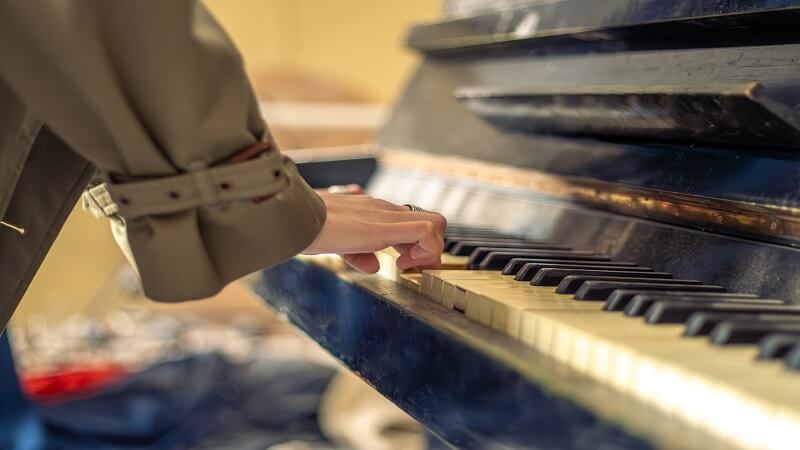Disposing of an old piano presents unique challenges due to its sheer size, heavy construction, and mix of recyclable and non-recyclable materials. Fortunately, there are responsible methods for removing and recycling unwanted pianos that prioritize safety and sustainability. Whether you’re looking to make space in your home or need to replace a non-functional instrument, there are numerous options to consider for careful piano removal and transport that minimize environmental impact.
Understanding the best steps for piano disposal helps prevent injury and reduces landfill waste. From assessing your piano’s condition to choosing between donation, recycling, or hiring professionals, knowing your options ensures you can make an informed decision for your household and community.
Assessing Your Piano’s Condition
The first step in safely disposing of a piano is to examine its condition carefully. If the piano is still playable, restoring or relocating it may be preferable to disposing of it. Minor repairs can often bring an older instrument back to life, which opens the door to future use, donation, or sale. However, if the piano is structurally unsound, has sustained water or pest damage, or is otherwise irreparably broken, recycling or proper disposal is best.
Being honest about the piano’s state aids in choosing the most practical and environmentally responsible approach. Often, working pianos can find new homes, while those beyond repair should be handled by professionals experienced in large-item recycling and disposal.
Donation Options
Additionally, contacting local music teachers or community centers can help identify individuals or programs in need, ensuring your piano reaches someone who will truly benefit from it. Some organizations may offer tax deductions for donated instruments, providing an added incentive to give responsibly. Finally, sharing your donation on social media or community boards can attract potential recipients and increase the likelihood of finding a suitable home for your piano.
Selling Your Piano
If your piano is still in good playing condition but you no longer need it, selling is a meaningful way to pass it on. Online platforms like Facebook Marketplace, Craigslist, or eBay enable you to connect with local buyers. When listing, provide a detailed description of the piano, including any history of repairs or known issues, and upload high-quality images. Transparency attracts genuine buyers and helps set fair expectations.
Recycling and Repurposing Old Pianos
Pianos are composed of numerous recyclable materials, including wood, metal, and ivory. Contact your local recycling center to determine if they accept piano parts, particularly the cast-iron frame, strings, and various wooden components. Additionally, artists, DIY enthusiasts, and furniture makers often seek out old piano parts for woodworking, art projects, or home decor, giving once-loved instruments new life in creative ways.
Partnering with Local Recycling Facilities
Search for recycling centers in your area equipped to dismantle pianos. Some facilities have experience with large, complex items, ensuring that reusable materials are diverted from landfills. Proper recycling depends on your area’s guidelines and the service provider’s capacity to handle bulky items efficiently.
Professional Removal Services
When a piano’s too large or damaged to move safely on your own, professional removal services offer a safer and more convenient solution. These experts are trained to handle heavy objects in tight spaces, minimizing risks of property damage or injury. Removal service costs generally range from $200 to $500, depending on the piano’s location and the degree of difficulty in transport.
Benefits of Hiring Professionals
Professionals handle all aspects of piano disposal, including secure transportation and proper recycling or disposal in accordance with local regulations. Many removal companies strive to adopt environmentally friendly practices, ensuring that usable parts are recycled whenever possible.
DIY Disposal Considerations
Self-removal or dismantling of a piano is an extremely challenging and labor-intensive task that requires specialized tools, careful planning, and a thorough understanding of the instrument’s construction. Suppose you choose to take the DIY route. In that case, it is essential to ensure you have ample assistance from multiple capable individuals, appropriate safety equipment such as gloves, steel-toed shoes, and lifting straps, and a solid grasp of how to safely disassemble the piano’s heavy, fragile, and potentially hazardous components, including the cast iron frame, strings, and intricate woodwork. Heavy lifting and improper handling can easily result in serious injuries, permanent damage to the piano, or even structural damage to your home. Therefore, unless you have prior experience with disassembling large, complex items and a well-thought-out plan for transport and storage, hiring professional piano removal services is almost always the safer, more efficient, and ultimately more cost-effective solution.
Environmental Impact
Pianos disposed of improperly can contribute to landfill waste and strain local waste management resources. Choosing to donate, recycle, or use eco-conscious removal services conserves valuable resources, reduces your environmental footprint, and supports local community causes. Every piano kept out of the landfill extends its useful life or transforms it into something new, promoting sustainability even after its music fades.
By thoughtfully considering your options—whether donation, resale, recycling, or professional removal—you can ensure that your old piano is handled safely and responsibly, positively impacting both your household and the environment.
Conclusion
In conclusion, responsibly removing and recycling an old piano combines safety, practicality, and environmental stewardship. By evaluating the instrument’s condition and exploring options such as donation, resale, recycling, or professional removal, you can ensure that the piano’s materials are reused and its legacy extended. Whether giving it a new home, repurposing its parts, or relying on trained experts, taking a careful, informed approach minimizes risk, reduces landfill waste, and supports sustainability. Thoughtful piano disposal not only protects your household and property but also contributes to a greener, more resourceful community.

